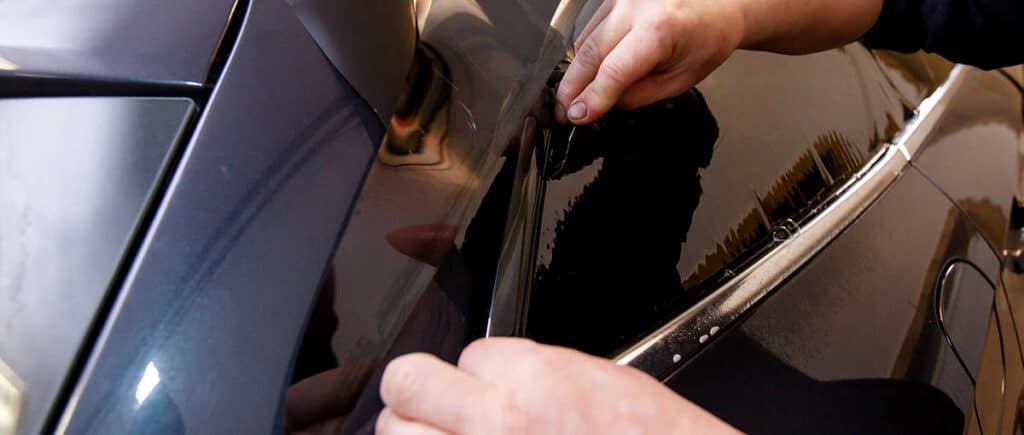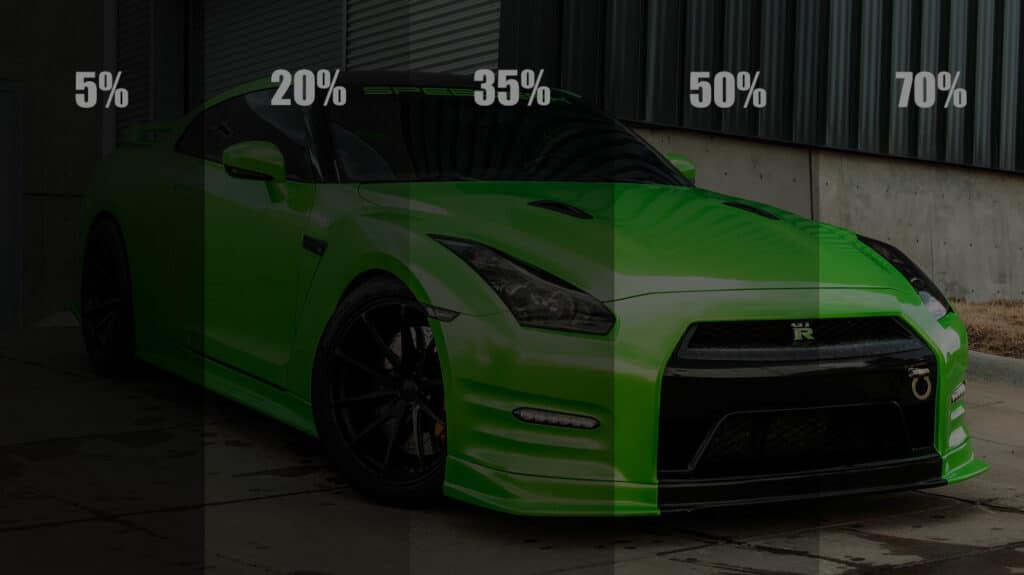Car owners choose to get their windows tinted for various reasons. Window tints offer several benefits like privacy, improved look and feel, protection from potentially harmful UV rays, and lower cabin temperature.
However, window tinting needs to be done in accordance with your state’s law. In Virginia, the tint laws are relatively lenient.
But before you go ahead and choose the window tint for your vehicle, do check the Virginia tint law to ensure that you are within legal limits.
Is Window Tint Legal in Virginia?

Virginia window tint laws were established in 1999 to ensure driver safety. However, these laws have changed over the years to allow modern trends and practices.
These changes have to do with tint positioning and transparency. Let’s take a closer look at the requirements put forth by the state.
Permitted Window Tint Darkness

Window tints are typically categorized based on how transparent they are. This is measured with the help of a unit called VLT which stands for visible light transmission.
The lower the VLT%, the darker the tint, and the more light it will block, offering more privacy as a result.
Window tints are available in VLT levels ranging from 10% to 90%. But you must choose the window tint that is legally permissible according to the state’s rules and regulations.
Below are the legal limits of permitted window darkness for various types of vehicles in Virginia.
Sedans
Windshield: You can have a non-reflective tint on the top 5″ of the windshield or above the AS-1 line
Driver-side windows: Minimum 50% VLT
Passenger-side windows: Minimum 50% VLT
Rear window: Minimum 35% VLT
SUVs and Vans

Windshield: You can have a non-reflective tint above the AS-1 line
Driver-side windows: Minimum 50% VLT
Passenger-side windows: Minimum 50% VLT
Rear window: No limit
If you have a medical exemption, you can install 35% VLT tint above the AS-1 line, on the top 5″ of your windshield, or a tint film of 70% VLT across your entire windshield. Your front windows can have a tint of up to 35% VLT.
Acceptable Tint Reflection
It is important to understand the difference between window tint darkness and reflectiveness.
The tint darkness is the amount of light that the tint film allows to pass through, while tint reflectiveness is how much incoming light is reflected by the film.

Sedans
Windshield: Should be clear and non-reflective
Driver-side windows: Should not be over 20% reflective
Passenger-side windows: Should not be over 20% reflective
Rear window: Should not be over 20% reflective
SUVs and Vans
Windshield: Should be clear and non-reflective
Driver-side windows: Cannot be over 20% reflective
Passenger-side windows: Cannot be over 20% reflective
Rear window: Cannot be over 20% reflective
Other Tint Rules You Need to Know
- If any of the windows in the vehicle are tinted, then you must install dual side mirrors.
- You can have a tint variance of 7%.
- Tint film manufacturers need not certify the film sold by them in the state.
- The vehicle must display stickers regarding window tinting, but this is unspecified by the tint law.
- The state allows medical exemptions for special tints.
- Any tint violation is considered a Class 3 misdemeanor if it is a first-time offense. Any subsequent offense is treated as a Class 2 misdemeanor.
State of Virginia Info

Officially known as the Commonwealth of Virginia, Virginia is situated between the Appalachian Mountains and the Atlantic Coast.
Renowned as the birthplace of several U.S. presidents, Virginia has the most Civil War battlefields and places where the Revolution, as well as the Civil War, came to an end.
Rich in history and heritage, Virginia’s many natural wonders are what draw visitors to the state.
Population: 8.66 million
Capital: Richmond
Registered vehicles: 7,606,452
Total lane miles: 164,132
Number of highways: 6
Tint law references: Code of Virginia 46.2-1052 | Administrative Code 46.2-1053
Medical exemption info: Medical Authorization Application | Authorization Info

